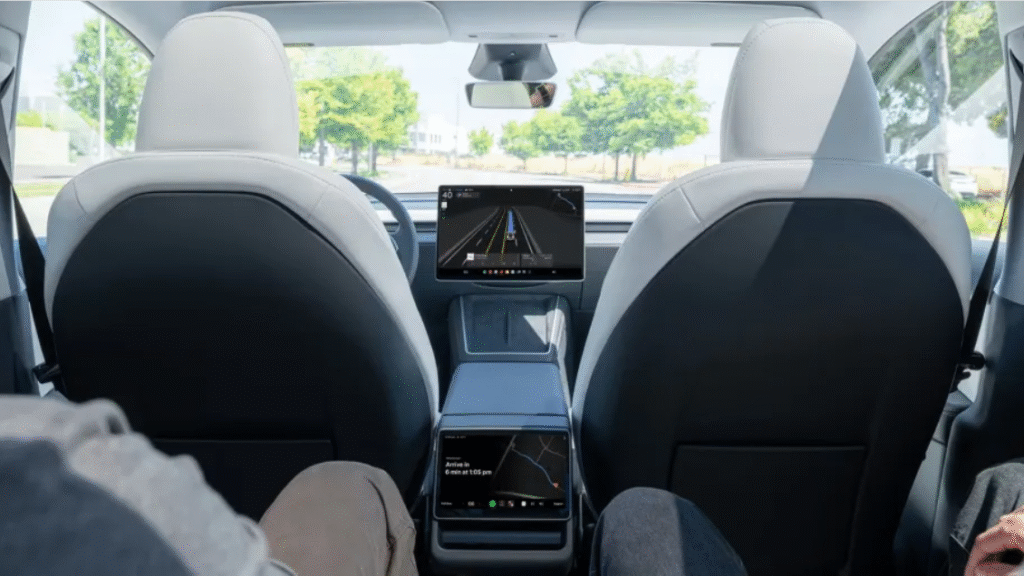Tesla has started driving its driverless Model Y Robotaxi in Austin. This is not just a headline but a big and real-world experiment for Tesla Autopilot and AI-powered transportation. Tesla says that its self-driving cars can drive on their own using only cameras and AI. Whereas other autonomous cars use expensive technology like Lidar and Radar along with cameras. Tesla wants to prove FSD (Full Self-Driving) that its AI can learn to drive safely on difficult city roads even without these expensive technologies. This is not just a show-off, but a big test of autonomous vehicle technology, which many in the industry still consider risky.
1. Testing on Real Roads, Not Just in Simulators
Other companies test their vehicles in closed testing areas or computer simulations. But Tesla is running its Robotaxi services directly on the real roads of Austin. Yes, there is a “safety monitor” installed in the vehicle, and people can control it remotely. These real roads are their biggest test for AI car testing.
2. Only Camera Work, No Lidar or Radar
Tesla has relied entirely on cameras and neural network-based AI for its self-driving system. They deliberately did not use technology like lidar or radar. This makes their Tesla technology cheaper and easier to spread on a large scale. But yes, it may also cause some problems in glare (bright sunlight), fog, or rain, which are part of the autonomous driving challenges.

3. Safe but Fast-Paced Steps
Right now Tesla has started with only about 10 vehicles. They are moving fast but are also being cautious. They have worked closely with local officials and have also given emergency response training to emergency teams. Still, some officials want it to be stopped until new and stricter autonomous vehicle rules are in place in Austin.
4. Being Reliable Even in Difficult Situations
Previous reports have shown that Tesla’s FSD (full self-driving) system sometimes gets stuck in difficult situations, such as running a red light, being in the wrong lane, or when an object comes into view. Now, every small glitch in Austin will give them an opportunity to learn from real-world data—or it could raise red flags for driverless car safety.
5. Lots of Data Is Being Received From Every Ride
Tesla has more than 2 million vehicles on the road, and they are constantly providing new driving data for training their AI system. Launching in Austin will give them more different types of data, such as experiences from quiet neighborhoods to crowded roads. This will enable their AI to learn even faster (AI Learning Process).
6. What Does This Mean Beyond Austin?
This pilot project is Tesla’s first step towards becoming a “Mobility-as-a-Service” provider. If it succeeds and, say, 1,000 vehicles start running, it will open up future revenue models and new avenues of earning for the company. But its success will depend on how good their AI car technology is and how much regulatory approval they get from the government.
Conclusion
It’s a major real-world test of Tesla’s bold self-driving tech. It’s a high-stakes experiment of sorts—one that will either prove Elon Musk’s camera-only autonomy approach right or expose flaws that still need to be fixed. The results will determine not just Tesla’s future but also how cities, governments, and the rest of the auto industry will view driverless cars in the years to come.

